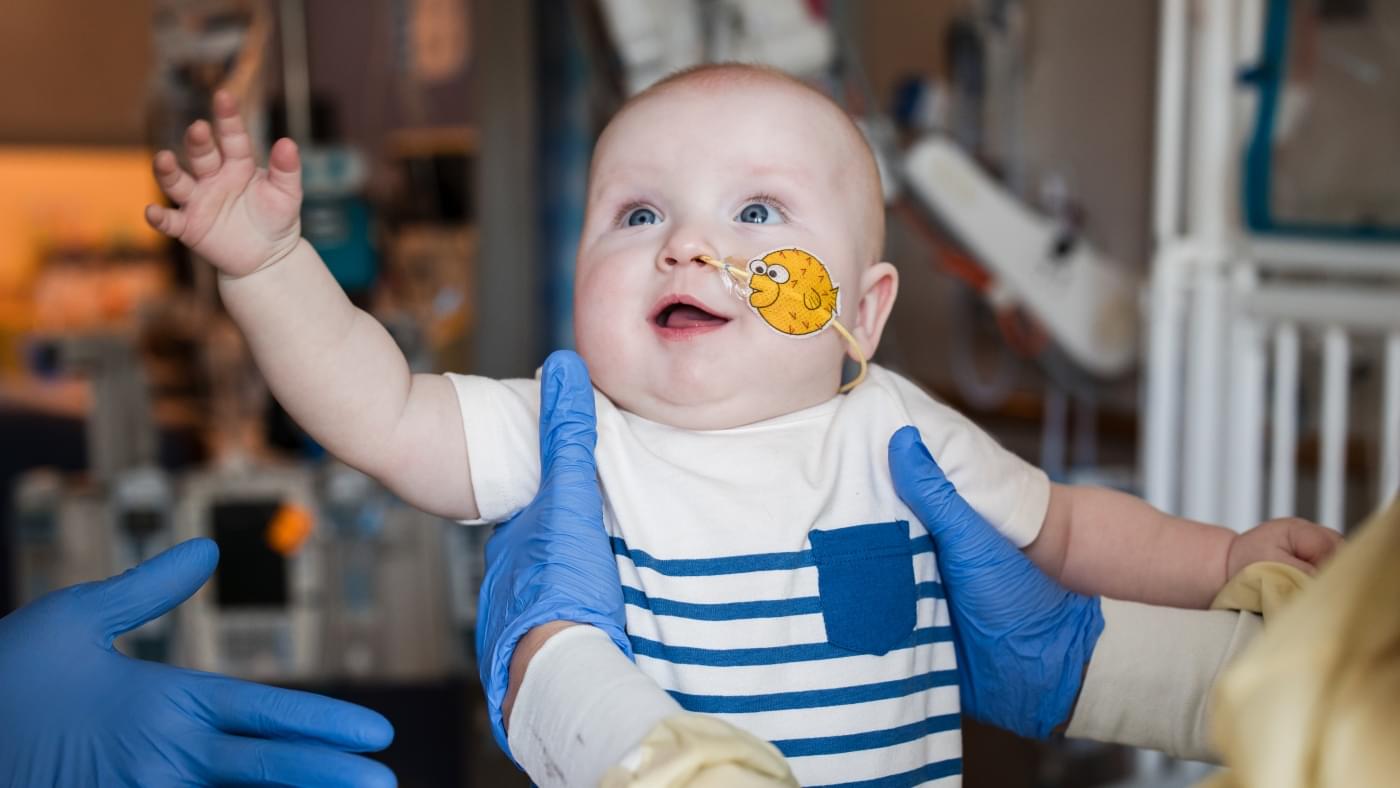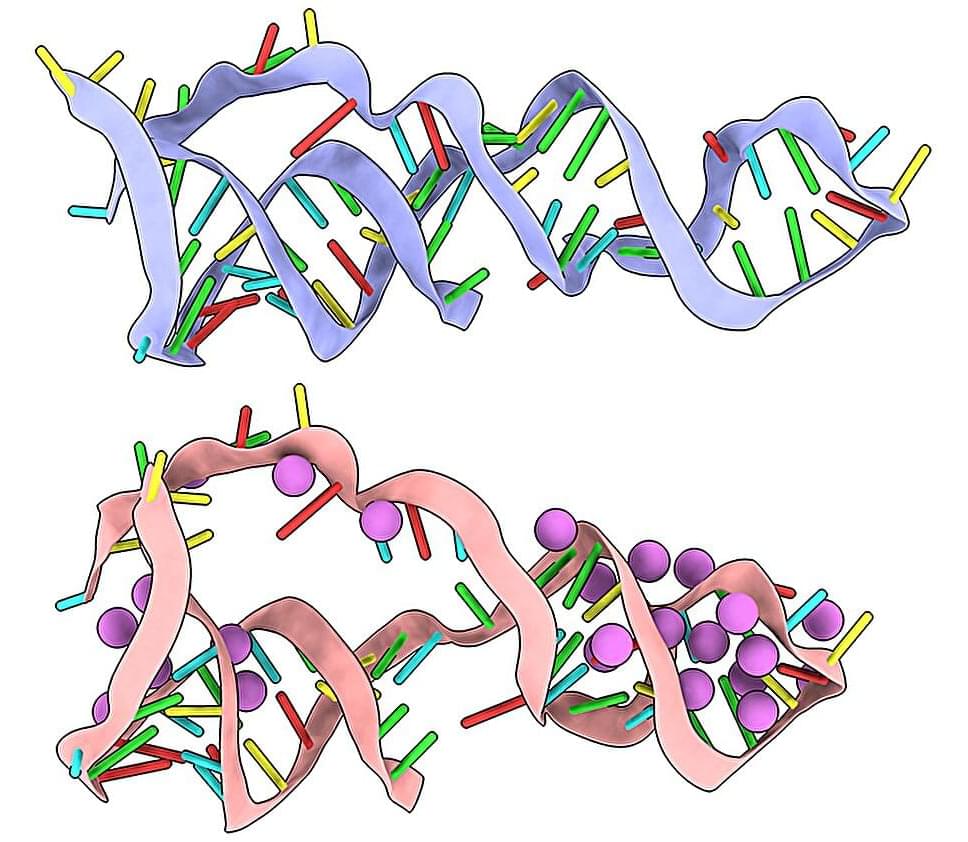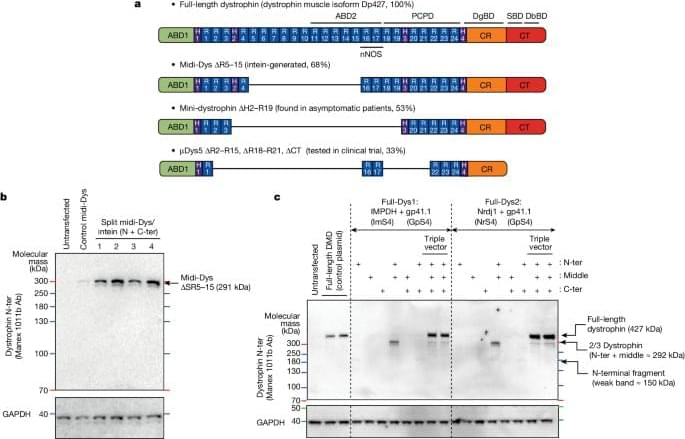For the first time, doctors have created a customized treatment using the revolutionary gene-editing technique known as CRISPR to treat a baby with a rare, life-threatening genetic disorder.



Ribonucleic acid, also called RNA, is a molecule present in all living cells. It plays a critical role in transmitting genetic instructions from DNA and creating proteins. With the power to execute a plethora of functions, the little RNA “messenger” has led to important innovations across therapeutics, diagnostics, and vaccines, and made us rethink our understanding of life itself.
A team of researchers from Boston University’s Biological Design Center and the Department of Biomedical Engineering recently made significant steps forward in the development of the next generation of computational RNA tools. They recently published a study in Nature Communications describing a generative AI technique for designing different types of RNA molecules with improved function.
Much like a large language model that can be used to compose entirely new texts, the model can compose new RNA sequences tailored for specific tasks in the cell or in a diagnostic assay. Their research has shown that it’s possible to predict and generate RNA sequences that have specific functions across a broad array of potential applications.

One of the reasons why this has never happened before is that spiders themselves are difficult organisms to work with within the laboratory. They are a diverse group, have a complex genome structure, and their cannibalistic nature means that they have to be reared individually, otherwise their cage neighbors would be gobbled up. Despite this, new developments in Parasteatoda tepidariorum have allowed this species to become a research model.
The research team looked into spider silk as the target. Spider silk is an incredibly strong and scientifically interesting substance, as it is five times stronger than a steel cable of the same weight, tear-resistant, while also being biodegradable, lightweight, and elastic.
To genetically modify this arachnophobe’s nightmare, the scientists developed an injection solution. This had a gene-editing system that also included a red fluorescent protein gene sequence. This solution was then injected into oocytes inside unfertilized female spiders, when these spiders mated with males, it resulted in the genetically modified offspring.
Join us on Patreon! https://www.patreon.com/MichaelLustgartenPhD
Discount Links/Affiliates:
Blood testing (where I get the majority of my labs): https://www.ultalabtests.com/partners/michaellustgarten.
At-Home Metabolomics: https://www.iollo.com?ref=michael-lustgarten.
Use Code: CONQUERAGING At Checkout.
Clearly Filtered Water Filter: https://get.aspr.app/SHoPY
Epigenetic, Telomere Testing: https://trudiagnostic.com/?irclickid=U-s3Ii2r7xyIU-LSYLyQdQ6…M0&irgwc=1
Use Code: CONQUERAGING
NAD+ Quantification: https://www.jinfiniti.com/intracellular-nad-test/

In Biology 101, we learn that RNA is a single, ribbon-like strand of base pairs that is copied from our DNA and then read like a recipe to build a protein. But there’s more to the story. Some RNA strands fold into complex shapes that allow them to drive cellular processes like gene regulation and protein synthesis, or catalyze biochemical reactions.
We know that these active molecules, called non-coding RNAs, are present in all life forms, yet we’re just starting to understand their many roles—and how they can be harnessed for applications in environmental science, agriculture, and medicine.
To study—and potentially modify—the functions of non-coding RNAs, we need to determine their structure. Scientists from Lawrence Berkeley National Laboratory (Berkeley Lab) and the Hebrew University of Jerusalem have developed a streamlined process that predicts the structure of an RNA molecule down to the atomic level.


One of the most terrifying things about Dune is the fact that it rather accurately predicted what the next front of warfare will look like: genetic warfare. In twenty twenty five, gene manipulation is the biggest threat in the theatre of war, because one gene-altering weapon can render an enemy force infertile at best, and terribly mutated at worst. But that’s not something that happens to the products of breeding programmes in the Dune-verse, at least on a physical level. In this video, we will take a look at every breeding programme in Frank Herbert’s creation, and talk about their horrifying histories in detail.

Developmental time (or time to maturity) strongly correlates with an animal’s maximum lifespan, with late-maturing individuals often living longer. However, the genetic mechanisms underlying this phenomenon remain largely unknown. This may be because most previously identified longevity genes regulate growth rate rather than developmental time. To address this gap, we genetically manipulated prothoracicotropic hormone (PTTH), the primary regulator of developmental timing in Drosophila, to explore the genetic link between developmental time and longevity. Loss of PTTH delays developmental timing without altering the growth rate. Intriguingly, PTTH mutants exhibit extended lifespan despite their larger body size. This lifespan extension depends on ecdysone signaling, as feeding 20-hydroxyecdysone to PTTH mutants reverses the effect. Mechanistically, loss of PTTH blunts age-dependent chronic inflammation, specifically in fly hepatocytes (oenocytes). Developmental transcriptomics reveal that NF-κB signaling activates during larva-to-adult transition, with PTTH inducing this signaling via ecdysone. Notably, time-restricted and oenocyte-specific silencing of Relish (an NF-κB homolog) at early 3rd instar larval stages significantly prolongs adult lifespan while delaying pupariation. Our study establishes an aging model that uncouples developmental time from growth rate, highlighting NF-κB signaling as a key developmental program in linking developmental time to adult lifespan.
ITrust Capital: Use code IMPACTGO when you sign up and fund your account to get a $100 bonus at https://impacttheory.co/iTrustCapitalMay.
Shopify: Sign up for your one-dollar-per-month trial period at https://impacttheory.co/ShopifyApr.
On this mind-bending episode of Impact Theory, Tom Bilyeu sits down with Ben Lamm, the visionary entrepreneur behind Colossal Biosciences, to explore a world that sounds straight out of science fiction—yet is rapidly becoming our reality. Together, they pull back the curtain on the groundbreaking technology making de-extinction not only possible, but increasingly practical, from resurrecting woolly mammoths and dire wolves to saving endangered species and unraveling the secrets of longevity.
Ben explains how CRISPR gene editing has unlocked the power to make precise DNA changes—editing multiple genes simultaneously, synthesizing entirely new genetic blocks, and pushing the limits of what’s possible in biology and conservation. The conversation dives deep into the technical hurdles, ethical questions, and the unexpected magic of re-engineering life itself, whether it’s creating hairier, “woolly” mice or tackling the colossal challenge of artificial wombs and universal eggs.
But this episode goes way beyond Jurassic Park fantasies. Tom and Ben debate the future of human health, gene selection through IVF, the specter of eugenics, global competition in biotechnology, and how AI will soon supercharge the pace of biological engineering. They even touch on revolutionary solutions to our plastic crisis and what it means to inspire the next generation of scientists.
Get ready to have your mind expanded. This is not just a podcast about bringing back extinct creatures—it’s a deep dive into the next frontiers of life on Earth, the technologies changing everything, and the choices we’ll face as architects of our own biology. Let’s get legendary.
00:00 Meet Ben Lamm.